Hailing from a partition-affected, erudite family, being a rebel since childhood, becoming the Managing Director of Cadence Design Systems in India at the early age of thirty-two and Corporate Vice President at the age of thirty-six, Jaswinder Ahuja, an engineer, and a thought leader, continues his insightful journey. In a conversation with Sudeshna Das, Consulting Editor at EFY, he shares the story of his life.
Jaswinder Ahuja was born in 1963 in New Delhi in a highly educated family. During the partition of India in 1947, his parents shifted to India from Pakistan. His grandparents were compelled to take one of the dangerous train journeys of 1947 and witnessed great atrocities. He grew up hearing those stories from his grandparents.
His father completed BSc in physics and began his career as a lecturer at Lahore University. Later, he pursued mechanical engineering from VJTI, Mumbai, and continued his career in engineering. His mother has been a homemaker. Jaswinder mentions his parents as the pillars of strength in his life. His father guided and inspired him while his mother nurtured him with utmost care.
| “My father was the biggest source of strength and inspiration in my life and my mother was a great support. I was a problem child but my mother was very patient. She helped me a lot with my academics in the early days. I think, her patience and devotion helped me to focus and excel in academics. While both of my parents had great aspirations for me, my mother had higher expectations. Her expectation pushed me to excel in whatever I did.” — Jaswinder Ahuja |
Reminiscing The Early Years
“I was born in Shakti Nagar of North Delhi and spent my early days there. We moved to the Greater Kailash area of South Delhi in 1973, which has been home now for the last 50 years.” In 1977, Jaswinder’s father got transferred to Chennai and the entire family spent the next five years there. Thus, he finished his schooling in Chennai.
Jaswinder describes his school days in Chennai as a “life-shaping experience” where he learned to overcome challenges, make friends, and be accepted despite language barriers and cultural differences. As a North Indian boy relocated to South India, he narrates, “I come from a Sikh family. I used to wear a turban, and the only person to do so in the entire school. So, I was always ‘visibly’ a minority at the school.”
However, he was confident enough to handle situations like being stereotyped as an aggressive North Indian. He narrates, “It was an annual day function at school. Our principal’s daughter, who was a student in the school, was performing on the stage. Suddenly, somebody from the general vicinity of where I was standing, threw something onto the stage. The principal was furious and wanted to catch the offender. Somehow my name came up. Nobody bothered to find out who the real culprit was as it was very easy for everybody to jump to the conclusion that it must be me because I was this aggressive North Indian Sardar. I kept hearing those stereotypical words.“
| “I think the foundational lessons in my life came from my initial school days at Chennai. Being a North Indian boy from a Sikh family, I was always a minority in South India. I faced the adversity of being stereotyped but overcame the same with confidence. The foundational life lessons like the value of not stereotyping people, accepting diversity, being open-minded and empathetic, came from those experiences.” — Jaswinder Ahuja |
He tried to convince the school authority about his innocence, but no one believed him. The principal was ready to expel him from the school. He says, “Fortunately, my father believed me as we had a very open and trusting relationship. He asked me if I wanted to change that school, but I expressed my wish to continue in that school only. I intended to redeem myself. Therefore, my father convinced my principal and I took it as a personal challenge to redeem my lost esteem. I got even more actively involved in various school activities. I tried to create visibility for myself in front of the principal. Two years later, the same principal made me the school captain.”
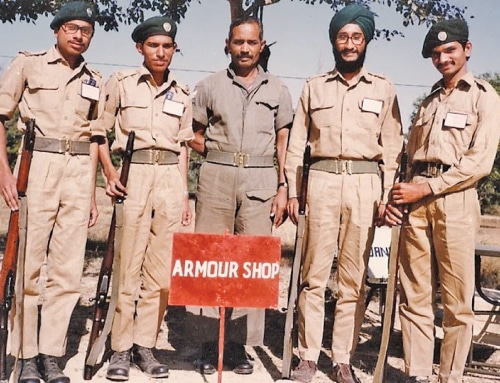
That experience helped Jaswinder learn something important for the rest of his life. He took the lesson to be fair with any complaint. He makes it a point to be patient, empathetic, and open-minded towards people and not carry any stereotype mindset or prejudice. Those foundational life lessons enabled him to lead and work with people from diverse backgrounds in various global and national-level projects.
While describing his school days, Jaswinder mentions his mathematics teacher, Vishwanath Sir. He was a great mentor and influencer for him. Jaswinder recalls, “I reached out to him while preparing for the IIT entrance examination. His approach to teaching mathematics was more about creating an enjoyable learning environment than doing work. This helped me to inculcate the mindset to enjoy mathematics rather than being afraid of it.”
Becoming An Electronics Engineer
There is an interesting anecdote about Jaswinder opting for the electronics engineering course after completing his twelfth standard in 1982. This story reflects his passion for electronics and his dedication level. He narrates, “I was influenced by a lot of people around me who were engineers. My father is an engineer. My mama (mom’s brother) is an engineer. Two of my older cousins are engineers. Moreover, I was always interested in technology, and science was always my passion in school. So engineering was almost like a default choice. Therefore, the question was what type of engineering I would be going to do. It was the early 80s, immediately after we got exposed to colour televisions leading up to the 1982 Asian Games. Cassette players were also introduced sometime in the 1979-80 timeframe. So, I was quite fascinated by these gizmos and that steered me toward electronics.”
In the counseling session after qualifying for the Common Entrance Examination for all IITs, Jaswinder preferred to take electronics in any of the IITs rather than opting for any other stream in the best-ranked IITs. It was a stressful situation for him as well as his family. His father requested the then Director of IIT Madras to counsel Jaswinder. However, Jaswinder did not change his mind. He explains, “I was passionate to understand and study the field of electronics and not anything else. Finally, I landed at the Indian Institute of Technology, Varanasi at Banaras Hindu University (IIT-BHU).”
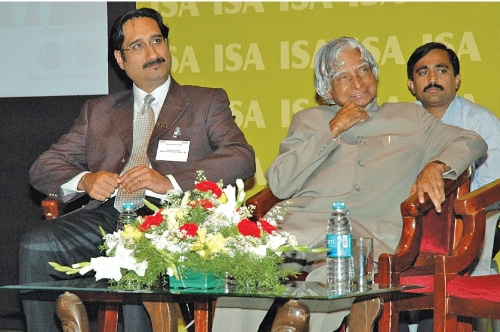
Jaswinder recalls his engineering days as a “glorious period” of his life. He was an all-rounder. Besides studying, he was active in sports, dramatics, and painting. He joined National Cadet Corps (NCC) to continue shooting as a sport. BHU shooting team won the inter-university national championship under his captaincy. He was involved in various cultural activities, fests, dramatics, etc. His passion for painting also flourished at IIT-BHU.
Jaswinder broke the stereotype of a good student repeatedly throughout his educational life. For example, he did not attend classes that were not interesting enough for him. He focused on overall development rather than scoring only good marks. He opines, “I learned important lessons in my life, on leadership, on teamwork, on facing and overcoming obstacles and challenges in dabbling with the unknown through my unique experiences during engineering days. Though these experiences were not always related to academics, as the academic system is quite well regimented in India thus leaving no scope for learning life lessons.”
He completed his bachelor’s degree in engineering in 1986. After that, he completed his master’s in computer engineering from Northeastern University in Boston, USA. This course exposed him to both software and hardware engineering, especially robotics. He made a six-degree-of-freedom robotic arm as a part of his academic project. However, his passion for robotics was defeated by his determination to come back to India. He decided to continue with VLSI design as there was not much scope for robotics at that time.
| “Either you do what you love, or you learn to love what you do. Because otherwise, your life is going to be miserable. If you get to do what you love, you are fortunate. But if it is not, you should try to enjoy it. I always try to make the most of everything because I don’t want to be miserable. I even approach most of my routine tasks with the mindset of doing them in interesting and novel ways.” — Jaswinder Ahuja |
Walking Toward The Professional Goals
Soon after completing his master’s degree in 1988, Jaswinder began his professional journey. While describing the same, he narrates, “I was not sure if there were any jobs in VLSI design, either. A friend of mine showed me a job advertisement that was published in a newspaper called India Abroad. That advertisement was by a company named Gateway Design Automation, which had an office in Noida. They seemed to be doing some interesting work in VLSI design. That looked like an interesting opportunity to me for going back to India. I applied for the job at Gateway and they offered me a position. I had six months to join that company and I utilised those six months in learning VLSI design. In 1988, I came back and joined Gateway Design Automation.”
In 1989, Gateway Design Automation was acquired by Cadence Design Systems and Jaswinder has continued his journey in Cadence since then. While describing the initial days of his career, Jaswinder recalls, “It was a standard engineering job. I worked on various projects related to the development of building blocks for silicon chips, or software development. Those experiences helped me to understand operational activities.”
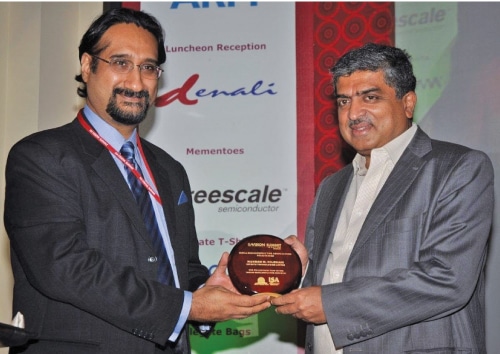
Jaswinder got into a techno-managerial role at a very early stage in his career. He began leading a team of 60 to 70 people as a Director within six years of his professional journey. “I got pushed into the management track very early in my career. If I could turn the clock back, I would have remained hands-on for longer, because the operation in India was growing. However, my management saw the managerial potential in me and thus in 1996, at the age of 32, I was made the Managing Director for Cadence India. In those days, that was unheard of for somebody that young getting that role.”
| Key Contributions in the Indian Semiconductor & ESDM Sector |
|
Many senior colleagues discouraged him by predicting the possibility of his failure. “However, it was déjà vu for me all over again. I took up the challenge,” Jaswinder says. In those initial days, he went through a lot of rapid learning phases, reached out, and tried to identify direct and indirect mentors from whom he could learn. Jaswinder says, “Fortunately, I must have done something right, so I am still in the company. When I took responsibility for the India operations, we were 100 odd people. Today, we are over 3,500 people at our four locations—Noida, Bengaluru, Pune, and Ahmedabad.”
Leading By Example
Jaswinder says, “I feel that as an individual, I can accomplish very little. My success is entirely due to the power of my team and the quality of the people around me. I try to enable them to maximise their contribution and value. I help them to channelise their energy. Thus, the key essence of my leadership is to enable, empower, and unleash the creativity, potential, and energy of each team member. My management approaches are informal, very open.”
| “Firstly, entrepreneurs need to be very clear in their minds about the problem they are going to solve. Entrepreneurs need to be clear about the real value that they are bringing to the customers, that is, the value proposition. Secondly, they should understand both the local as well as global competitor landscape clearly so that they can make a widely acceptable offering. Thirdly, they should not get obsessed with their initial ideas and be open to accepting any information and insight-driven change for the benefit of their business.” — Jaswinder Ahuja |
The dignity of labour has been an integral part of Jaswinder’s life. He rarely ever said no to anything that needed to be done, be it any opportunity that came, or anything that the company needed him to do. Jaswinder narrates, “Back in 1993-94, I was an engineering manager, leading 40 to 50 people with a relatively small setup and we had a project for building a new office setup. There was no facility person on our team. So, I took this project and got the office building done. Similarly, I successfully handled the project for upgrading our entire IT infrastructure. I was always the go-to guy. If you needed something to be done, that nobody else was willing to do or there was nobody else to own it, then I would get it done. I think that mindset has helped me. I never said no to even any mundane operational tasks. I felt it’s just a task to be done.”
As Jaswinder proceeds in his leadership path, he focuses more on creating value and contributing to the success of his company, customers, and society. Thus, he ensures making an impact.
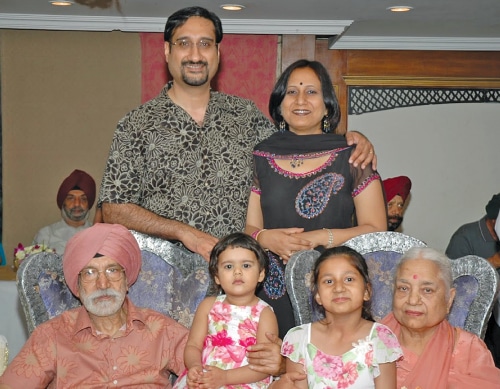
Jaswinder always preferred to be physically present with his parents. Therefore, he decided not to take the opportunity to be a member of the global management team at the corporate headquarter of Cadence as it needed relocation. However, he contributed to and led various global projects at Cadence, as and when required, leveraging his expertise in multiple functional areas as well as the ability to work with culturally diverse workforces worldwide.
He keeps looking for opportunities to contribute in innovative ways. For example, he proposed and set up centralised R&D operations function at Cadence, led it for the next three years, and then handed it over to his successor. He took responsibility for Cadence Research & Development (R&D) Globalization program and managed various global collaborative R&D projects between Cadence and its major customers.
In 2008, Cadence went through a major period of turmoil globally, and most of the senior executives, including the then-CEO, left the company and a new management team came on board. Jaswinder contributed to the rebuilding process. He says, “Our global HR head, Tina Jones, reached out to me to support her in employee engagement, and in redefining the company culture. So, I spent one year on an HR project. It was a wonderful, foundational experience. I learned a lot by doing that, as I got an opportunity to facilitate the transition of our new CEO.”
Giving Back To Society
Jaswinder’s belief in making an impact through contribution towards society makes him highly involved in the corporate social responsibility (CSR) initiatives of Cadence at a personal level. He explains, “We, at Cadence India, started our CSR initiatives long before the CSR law came into effect in the country. We formed our employee volunteer group called ‘Make A Child Smile (MACS)’ in 1997. Over the years, we’ve built schools and orphanages through company contributions, personal contributions, and employee contributions. We have a very active mentoring programme where our employees go and volunteer their time in mentoring orphans and underprivileged children.”
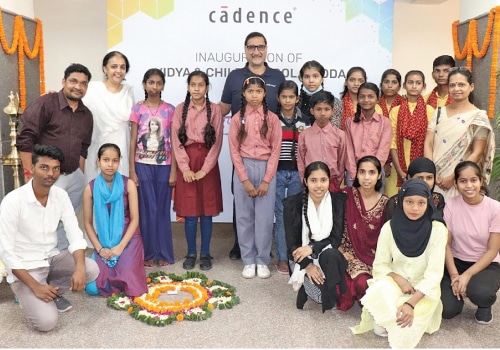
To raise awareness and mobilize the corporate fraternity for the cause of child rights in India, Cadence has been organising the Corporate Citizenship Challenge for the Cause of Children, or 5Cs. 5Cs started life with NGO CRY. Initially, it was only a cricket tournament, but now it encompasses several sports and the NGO partner is Concern India Foundation. Between 15 and 20 corporates take part in 5Cs every year. Jaswinder personally patronises this tournament.
Jaswinder says, “My involvement, obviously, with the startups in the ESDM ecosystem is another way for me to be able to give back to society. I would like to stay very actively involved in education, in the cause of children, and in encouraging and mentoring youngsters and young startups.” Jaswinder has been directly and indirectly involved with many startups, both through the Electropreneur Park under STPI as well as outside.
|
Some Favourites of Jaswinder |
|
Enjoying Life Beyond Work
Jaswinder began his family life simultaneously with his professional journey. He met his wife Anuradha as his batchmate at IIT-BHU. They got married two years after completing the engineering degree. She worked in various important technical positions in Bharat Electronics Limited (BEL), CMC, and Hughes Software Systems, and even did a startup. He considers her a pillar of strength in his life and a great support.
Jaswinder and Anuradha have two daughters, Simran and Mansi. Their elder daughter Simran is working as a Business Systems Analyst and the younger one Mansi is still in college pursuing Law. While sharing a few memorable family moments, Jaswinder narrates, “At this stage of life, I want to devote my quality time with my daughters. I make it mandatory for myself to take ten days of annual vacation every year and spend time with my family. I love trying out new things with my daughters so that I can encourage them to be experimental and take on new challenges. We did scuba diving together in the Great Barrier Reef. It was one of the wishes on my bucket list which I was able to achieve.”
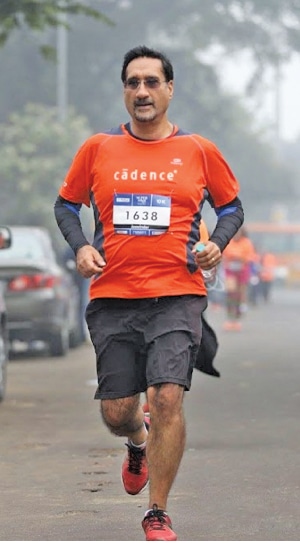
In addition to living a happy family life, Jaswinder continues nurturing his passion for sports, music, and food. He participates in the half Marathon regularly. As a food connoisseur, he loves to try authentic local food whenever and wherever he travels. However, he has a special soft corner for Awadhi cuisine. He loves listening to Gazals, old Hindi film songs from the 60s and 70s, as well as Jazz. While his all-time favourites in Indian singers are the two legends Farida Khanum and Mohd Rafi, he is also quite fond of the jazz idol Frank Sinatra.
Reflection is a daily ritual for Jaswinder. He prefers to reflect and spend time with himself during his morning walk. He describes, “Honestly, that is my most valuable time to reflect, to think, to plan. I mean, it’s the most productive time of the day. For me, reflection is the most powerful tool for learning from my own experiences, to begin with. And then, obviously, for planning for the day, the week, the month ahead, and for identifying the areas of my focus.”






